13-2 The Structure of DNA
DNA, or deoxyribonucleic acid, is a molecule that carries the genetic instructions for the development, functioning, growth, and reproduction of all known living organisms. Its structure consists of two long strands that coil around each other to form a double helix.
-
Nucleotides: DNA is composed of smaller units called nucleotides. Each nucleotide consists of three components: a sugar molecule (deoxyribose), a phosphate group, and one of four nitrogenous bases—adenine (A), thymine (T), cytosine (C), or guanine (G).
-
Base Pairing: The two DNA strands are held together by hydrogen bonds between complementary base pairs. Adenine pairs with thymine (A-T) and guanine pairs with cytosine (G-C).
-
Double Helix: The two strands of DNA are oriented in opposite directions and twist around each other to form a double helix. The sugar-phosphate backbone of each strand forms the outer edges while the nitrogenous bases pair in the center, providing stability to the structure.
-
Antiparallel Strands: The two strands run in opposite directions, known as antiparallel, meaning one strand runs in the 5' to 3' direction while the other runs in the opposite 3' to 5' direction.
-
Base Sequence: The sequence of nucleotides along the DNA strands encodes genetic information. This sequence determines the specific proteins produced and, ultimately, the characteristics and functions of an organism.
Base pair Rule
Chargaff analyzed the amounts of the four nucleotides found in DNA (Adenine, Thymine, Guanine, Cytosine) and noticed a pattern.
1. The amount of A, T, G, C varies from species to species
2. In each species, the amount of Adenine equals Thymine,
3. The amount of Guanine equals Cytosine
Bases come in two types:
pyrimidines (cytosine and thymine)
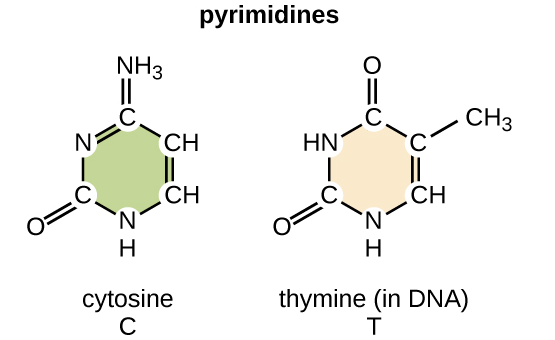
purines (guanine and adenine)
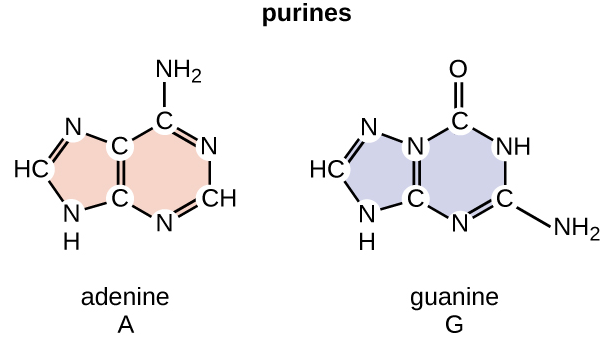
The Shape of DNA
Once scientists established the individual components of DNA, they had to determine the shape of the molecule.
Rosalind Franklin and Maurice Wilkins spent time taking X-ray diffraction pictures of the DNA molecule in an attempt to determine the shape of the DNA molecule.
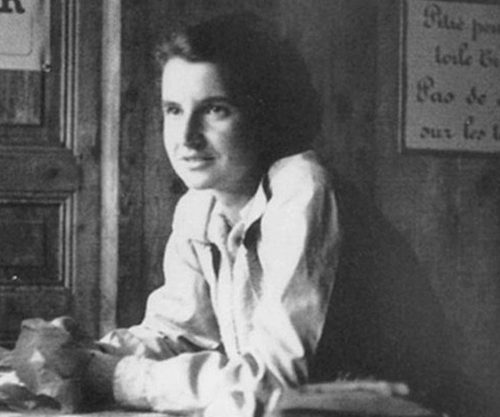
She photographed DNA - this famous image is called Photo 51.
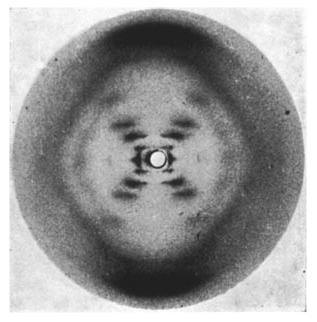
Watson and Crick
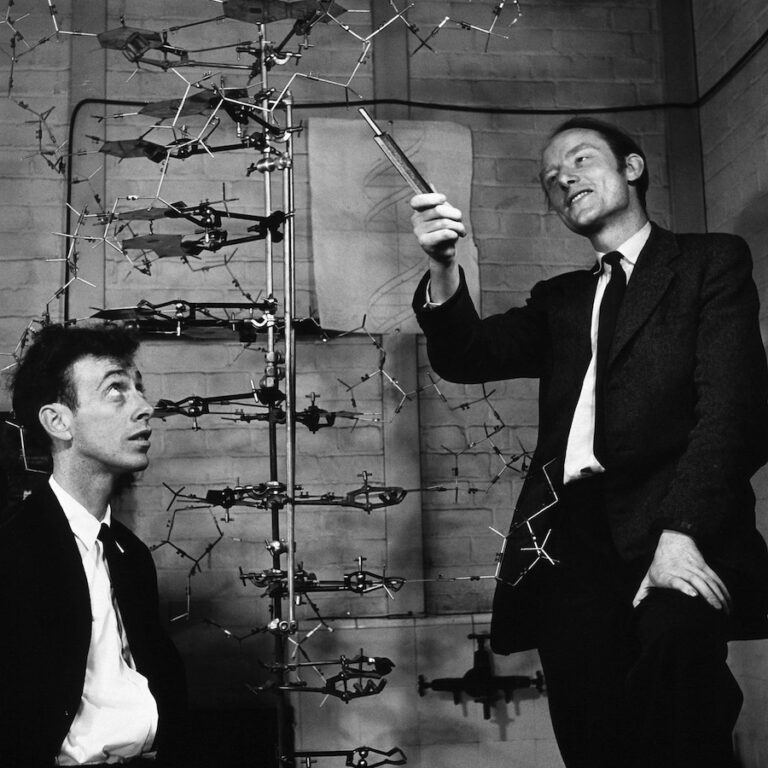
- established the structure as a double helix - like a ladder that is twisted.
- The two sides of the ladder are held together by hydrogen bonds.
- base pairs are in the center of the structure
The DNA Model - Finally Put Together
The sugar (deoxyribose) and phosphates make up the "backbone" of the DNA molecule.
The phosphate is attached to the 5' carbon (the 5 is a number given to sugar molecules). The DNA strand has a free phosphate on the 5' end, and a free sugar on the 3' end - these numbers will become important later.
Adenine always pairs with Thymine | Guanine always pairs with Cytosine
Side1:: A A T T G G C C A G A T A C
Side2:: T T A A C C G G T C T A T G
DNA is composed of subunits called nucleotides, strung together in a long chain --
Each nucleotide consists of: a phosphate, a sugar (deoxyribose), and a base
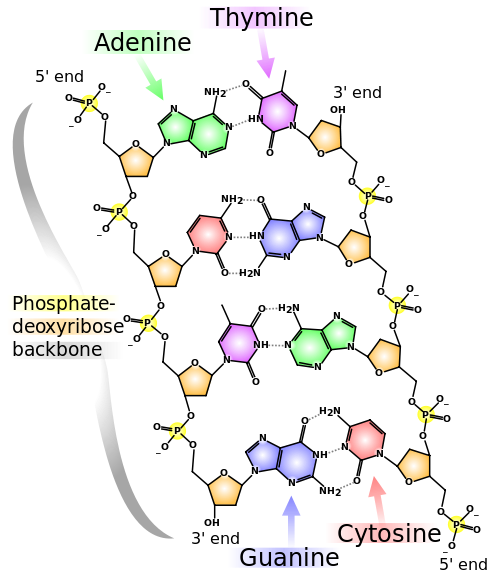
Image Credit: Wikimedia
Here the 5' end and the 3' end are seen again, each side of the ladder has an opposite orientation. One side of the ladder as a free sugar (the 3'end) the other side has a free phosphate (the 5'end). This arrangement is called: ANTI-PARALLEL
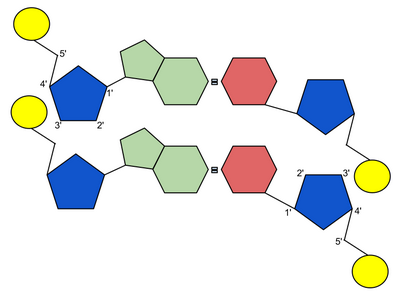
Other Chapters: 13-1 (Genetic Material), 13-2 (DNA Structure), 13-3 (Replication), 14-1 (Function of Genes), 15 (Mutations), 16 (Biotechnology)
